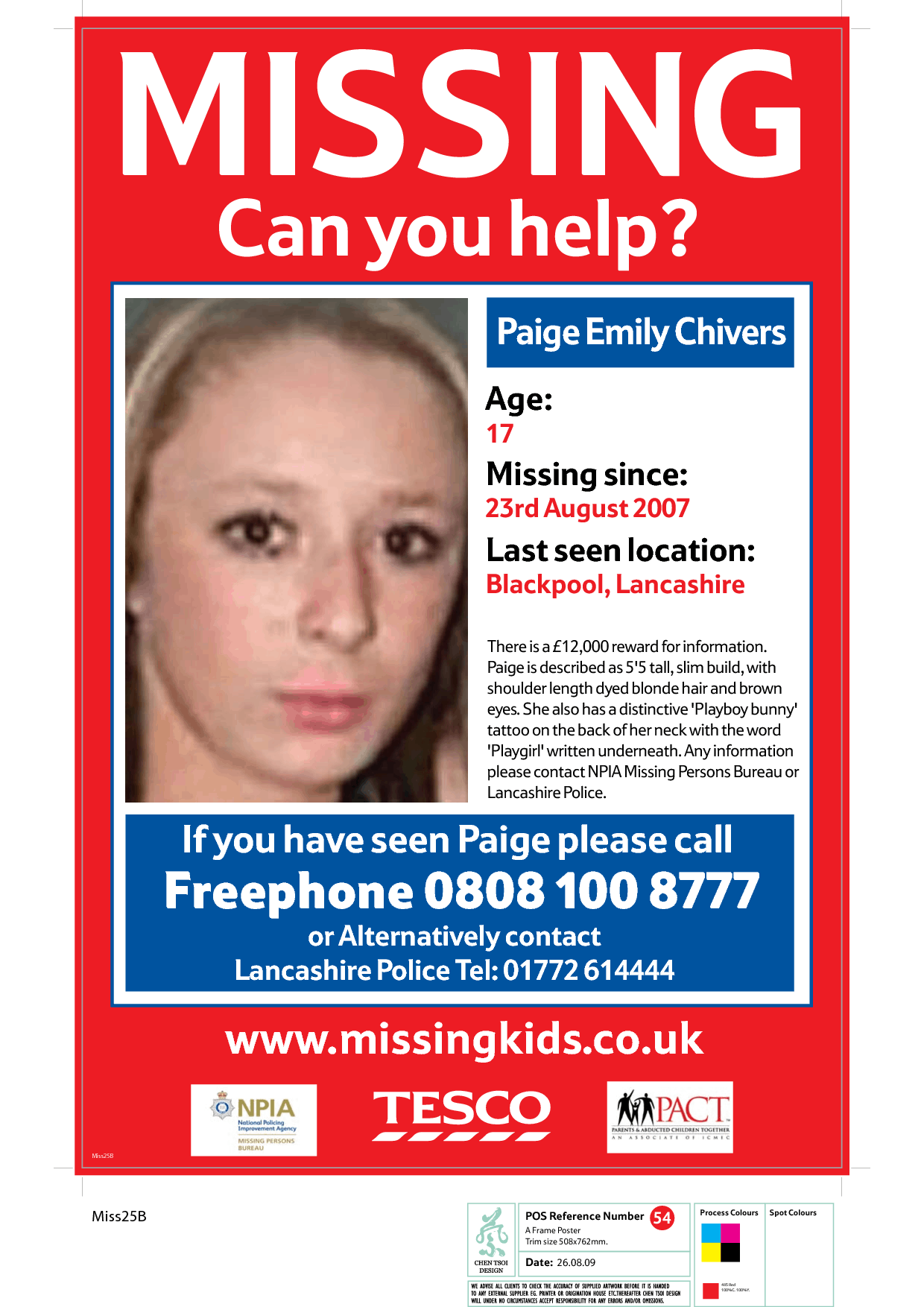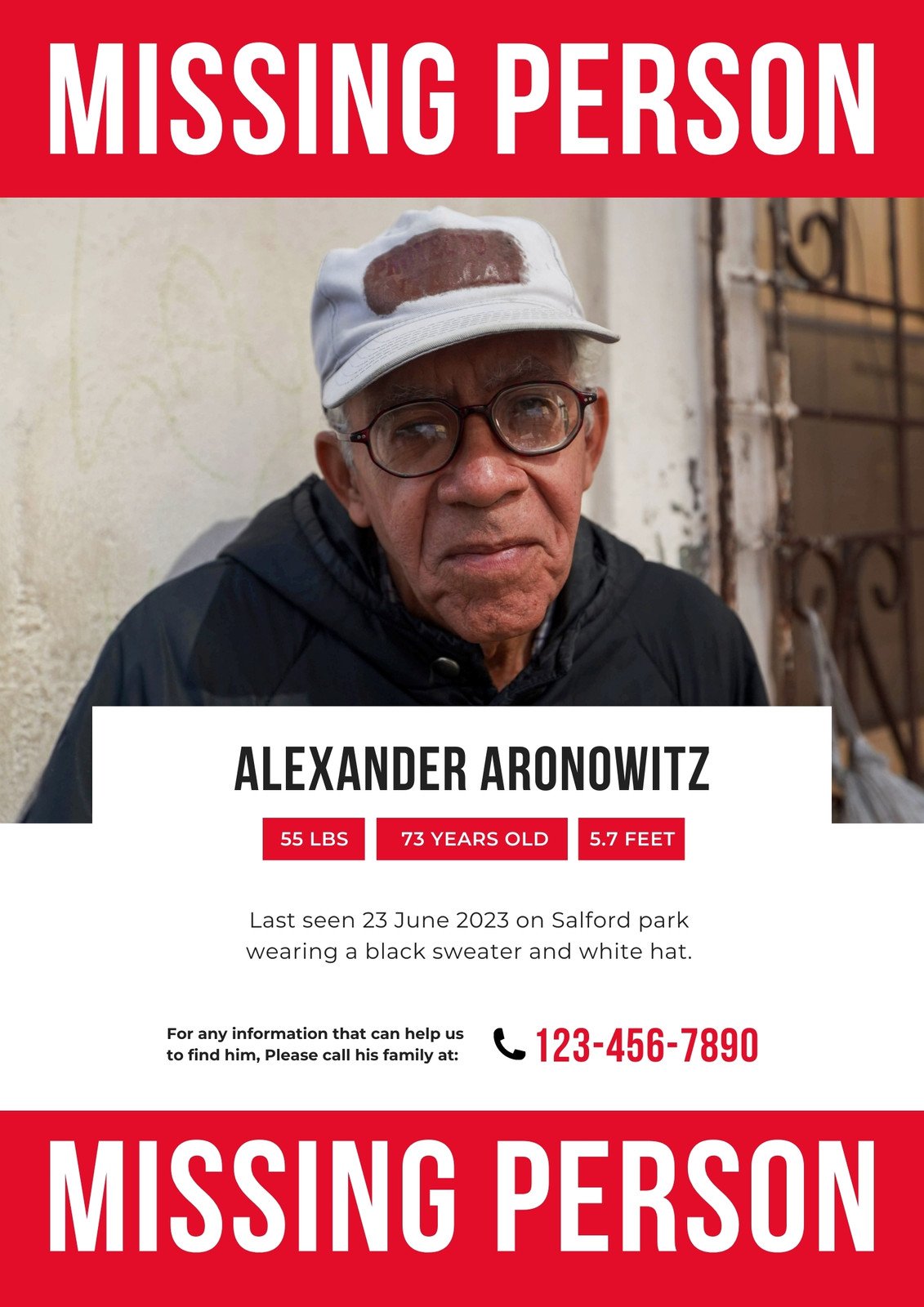The Heartache Of Missing People - A Community's Plea
When a person disappears, it creates a void, a space where laughter once was, where familiar steps echoed, or where a comforting presence simply existed. This sudden absence can throw a family, a neighborhood, even a whole town into a kind of quiet panic. It is, you know, a situation that touches something very deep inside us, making us wonder what happened and where they could be. The immediate aftermath often feels surreal, like a story you are reading but cannot put down, except this story is real and unfolding right in front of everyone.
The questions that come up are endless, too it's almost overwhelming for those left behind. Was it an accident? Did they simply get lost? Or is there something more to it, something darker? Cases like the New York man and his daughter, who went missing somewhere on Katahdin, really bring home the suddenness of it all. People everywhere feel a pull to help, to offer what they can, because the idea of someone just vanishing is, well, something that truly shakes us to our core. It's a situation that calls for everyone to pay attention, to be aware of what is happening around them.
The search efforts that begin are often intense, involving many people and resources, as seen with the ongoing search in Pictou County for young Lily and Jack Sullivan. These situations show us the dedication of those who look for the lost, working tirelessly through the day and into the night, like the searches that went on through Saturday night for these children. The hope is always to find them safe, to bring them back to their families, and to mend the broken pieces that a disappearance leaves behind. It's a collective effort, really, to bring someone home.
Table of Contents
- When Someone Just Vanishes - The Initial Shock
- What Happens During a Missing People Search?
- The Public's Role - Helping Find Missing People
- Why Do Some People Go Missing?
- The Emotional Toll - Families of Missing People
- How Does Media Coverage Affect Missing People Cases?
- The Challenges of Investigation - Finding Missing People
- What Can We Do to Support Families of Missing People?
When Someone Just Vanishes - The Initial Shock
The first moments after someone goes missing are often filled with disbelief. It is, you know, a moment when the world seems to tilt a little. Families and friends try to retrace steps, make calls, and check places the person might be. This initial phase is usually a flurry of activity, driven by a powerful urge to find the person quickly. For instance, when Angelina Petra Resendiz was reported missing, the Virginia State Police issued a critically missing adult alert, showing how quickly authorities can move to get the word out. The speed with which these alerts go out reflects the urgency of the situation, a race against the clock, so to speak.
There are often immediate questions about what the person was wearing or what they were doing last. Melissa June Beson, for example, was last seen in Lac du Flambeau wearing red sweatpants and a gray sweatshirt. Details like these, though seemingly small, become incredibly important pieces of a puzzle. They are shared widely, with pleas for anyone who might know of her whereabouts to come forward. This information, you see, helps people on the lookout know what to watch for. It's a way of giving eyes and ears to the search, making it a collective effort.
In some situations, the initial shock can turn into something else, something a bit more unsettling. People going missing can, in some respects, feel very suspicious from the start. It is not always the case, of course, but it is a common feeling that can arise. The idea that someone might be lost and wandering is one thing, but the thought of something else happening can weigh heavily on everyone involved. This feeling of unease can shape the way a search unfolds, adding another layer of complexity to an already difficult time. It is a natural human reaction, really, to wonder about the unknown.
What Happens During a Missing People Search?
When a person is reported missing, a search operation typically begins, bringing together various groups and individuals. These efforts can involve law enforcement, search and rescue teams, and many volunteers from the community. For instance, the searches for Lily and Jack Sullivan went on through Saturday night, showing the continuous nature of these operations. The goal is to cover as much ground as possible, looking for any sign or clue that might point to where the person is. It is, basically, a very thorough process.
The tools used in these searches can be varied, from maps and timelines to more advanced media. These resources help coordinate efforts and track areas that have already been checked. There is, you know, a lot of information to keep straight. Sometimes, discussions happen online, like those on Websleuths, where people share ideas and information, hoping to piece together what happened. While these discussions can be helpful, it is important to remember that they are not official channels and can sometimes spread misinformation, so it is something to be aware of.
During a search, investigators often talk with people who were close to the missing person. This includes family members, friends, and anyone who might have had recent contact. The RCMP, for instance, interviewed people closest to the two children missing from rural Nova Scotia. These conversations are meant to gather details about the person's habits, their state of mind, and any possible reasons for their disappearance. It is, you know, a way to build a picture of the person and their last known movements. Community members might also share information they have, like when a community member shared details about a four-hour interview, showing how many different sources of information can be explored.
The Public's Role - Helping Find Missing People
The public plays a very important part in helping find those who have gone missing. When alerts are issued, whether through traditional media or social platforms, they rely on people to keep an eye out. This collective awareness can make a real difference, as more eyes mean a greater chance of spotting something. For instance, when details about Melissa June Beson were shared, the plea for anyone knowing her whereabouts was directed at the general public. It is, you know, a way for everyone to contribute to the effort, even if it is just by being observant.
Sometimes, information comes in from unexpected places. There were, for example, calls about Jay, with people saying things like, "we know where Jay is, he's done this, he's done that." Some of these calls were from people screaming his name or saying he had been seen. While these tips can be confusing or even misleading, they still need to be checked out by authorities. It shows how the public's input, even when varied, becomes part of the larger search effort. It is, basically, a demonstration of how many different kinds of information can surface.
However, the public's involvement can also present challenges. In the case of the missing children in Nova Scotia, the stepfather had to ask people to stop 'attacking' their mother online. This shows that while community concern is valuable, it is important for people to be mindful of how they interact and share information, especially online. The focus should always be on helping the search, not on causing more distress to families who are already going through an incredibly difficult time. It is, you know, about being helpful and supportive, not adding to the burden.
Why Do Some People Go Missing?
The reasons why people disappear are often complex and can vary greatly from one situation to another. Sometimes, people are simply lost, perhaps disoriented or injured in an outdoor setting, like those who might be lost and wandering in a natural area. This can happen to anyone, really, especially if they are in unfamiliar surroundings or if weather conditions change suddenly. It is, you know, a common scenario in certain types of missing person cases, particularly in wilderness areas.
Other times, a person might choose to leave, perhaps feeling overwhelmed by problems in their life. Some people, for instance, might think they are escaping mental health issues by running away, but the problem, of course, tends to be always there inside of them. This kind of situation highlights the connection between mental well-being and a person's actions. It is, you know, a reminder that underlying struggles can sometimes lead to drastic decisions. People who are angry all of the time, for example, might also make choices that lead to them leaving without a trace.
In some cases, there is a question of whether a person was taken against their will. The warden of the municipality of Pictou County mentioned the stressful situation surrounding the missing children, Lily and Jack Sullivan. There is a difference, it is said, between begging for the return of your children when law enforcement has stated there is no evidence of abduction, and simply keeping your loved ones in your thoughts. This distinction is important because it guides how authorities approach a case, whether it is a search and rescue or a criminal investigation. It is, you know, a very sensitive area, where facts and emotions can sometimes clash.
The Emotional Toll - Families of Missing People
For the families of missing people, the emotional impact is, frankly, immense. It is a constant state of uncertainty, a feeling of being suspended between hope and despair. The stress can be overwhelming, as described by the warden of Pictou County regarding the search for Lily and Jack Sullivan. Every day without news is another day of worry, another day of not knowing where their loved one is or what has happened to them. This prolonged period of not knowing can take a serious toll on a person's well-being, both mentally and physically. It is, you know, a very heavy burden to carry.
Families often face public scrutiny and, in some cases, unfair criticism. The stepfather of the two missing children in Nova Scotia's Pictou County had to ask people to stop 'attacking' their mother online. This kind of public pressure and negative attention only adds to the pain and difficulty that families are already experiencing. It is, you know, a harsh reality that can come with publicizing a missing person case. Instead of support, they might find themselves having to defend against accusations or rumors, which is truly unfair.
The absence of a loved one is not just about the person who is gone; it is about the hole they leave behind in the lives of those who care about them. The longing for their return, the memories that flood the mind, and the constant wondering about their safety create a unique kind of grief. It is, you know, a grief without closure, a sadness that cannot fully begin until there is an answer. This ongoing emotional experience is a very real part of what it means to have someone you care about go missing.
How Does Media Coverage Affect Missing People Cases?
Media coverage plays a very significant role in missing people cases, often bringing public attention and resources to a search. When a story is shared widely, it increases the number of people who are aware of the situation and might be able to help. This can lead to more tips coming in, more volunteers joining search efforts, and more pressure on authorities to keep the case active. For example, the alerts issued for Angelina Petra Resendiz by Virginia State Police and NCIS would have been spread through various news outlets, reaching a large audience. It is, you know, a powerful tool for getting information out.
However, media attention can also be a mixed blessing. While it can generate much-needed awareness, it can also lead to speculation and rumors, as seen with the calls about "Jay" where people were saying things like, "we know where Jay is, he's done this, he's done that." These unverified claims can sometimes distract from the actual investigation or cause further distress to the family. It is, you know, a delicate balance between informing the public and maintaining the integrity of a search. The constant flow of information, whether accurate or not, can create a confusing picture for everyone involved.
The way a story is presented can also shape public perception. Some people might get their information from YouTube documentaries on missing people, which, as one person noted, stated that in the majority of cases, signs of the missing person are found within a certain timeframe. While these documentaries can raise awareness, their accuracy can vary, and they might not always reflect the nuances of a real investigation. It is, you know, important to consider the source of information and how it might influence how people think about a case. The public's understanding of a situation is very much shaped by what they see and hear in the news.
The Challenges of Investigation - Finding Missing People
Investigations into missing people cases face many challenges, making them some of the most difficult for law enforcement. One of the biggest hurdles is the lack of immediate information or clear evidence. Unlike other types of cases where a crime scene might exist, a missing person case often begins with simply an absence. This means investigators have to work with very little to go on, often relying on interviews and the hope of finding small clues. It is, you know, a bit like looking for a needle in a very large haystack.
The passage of time is another significant challenge. While some sources suggest that signs of a missing person are found within a certain timeframe in most cases, this is not always true, and every hour that passes can make a search more difficult. The weather, the terrain, and even human memory can all fade or change, making it harder to find traces. For example, search efforts for the New York man and his daughter on Katahdin would have been impacted by the natural environment. It is, basically, a race against the clock, where every moment counts.
Furthermore, the nature of disappearances themselves can be very suspicious. As one person put it, people going missing is almost by definition, highly suspicious. This means investigators often have to consider a wide range of possibilities, from an accidental getting lost to something more sinister. This broad scope requires extensive resources and careful consideration of every piece of information, no matter how small. It is, you know, a complex puzzle with many potential solutions, and finding the right one takes a lot of dedicated effort.
What Can We Do to Support Families of Missing People?
Supporting families of missing people means offering kindness and practical help without adding to their burden. This can involve sharing official alerts and information responsibly, without spreading rumors or engaging in speculation. When the stepfather of the missing children in Nova Scotia asked people to stop online attacks, it highlighted the need for respectful and empathetic public interaction. It is, you know, about creating a supportive environment, not one that causes more pain.
Community involvement, when done thoughtfully, can be a source of great comfort and assistance. This might include organizing search parties, helping distribute flyers, or simply offering a listening ear. The stress described by the warden of Pictou County for the families of Lily and Jack Sullivan shows how much they need this kind of community care. It is, basically, about being there for them in a way that truly helps, without expecting anything in return. Small acts of kindness can make a very big difference during such a trying time.
Remembering those who are missing, and keeping their stories alive, is also a way to show support. This is not about constantly begging for their return if there is no evidence of abduction, but rather about keeping their memory present and showing the family that their loved one is not forgotten. Whether through quiet reflection or respectful discussion, like those found on Websleuths, the act of remembering keeps hope alive and reminds families that they are not alone in their long wait. It is, you know, a way to honor the missing and stand with those who miss them.
- Jennifer Love Hewitt
- Kelly Rowland
- Gilmore Girls
- Woman Swallowed By Quicksand Beach
- How Many Kids Does Nick Cannon Have

Missing Persons - Randolph County Crime Stoppers

Missing Person Poster Templates | 11+ Free Word, PPT & PDF Formats

Missing Persons Poster Template - Templates Printable 2024